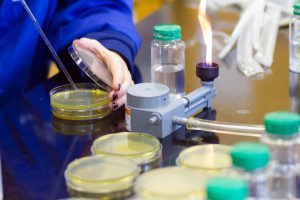Microorganisms present in pharmaceutical products or ingredients not only pose a threat to the user but may also reduce or inactivate the therapeutic function of the product. To address this threat, USP Chapter <1111> – Microbiological Examination of Nonsterile Products: Acceptance Criteria for Pharmaceutical Preparations and Substances for Pharmaceutical Use, provides two tables of microbiological acceptance criteria.USP Chapter 1111

Table 1 – Acceptance Criteria for Microbiological Quality of Nonsterile Dosage Forms, lists criteria for Total Count, Yeasts and Mold and the Specified Organisms addressed in USP Chapter <62>. The limits provided are segmented by the intended route of administration (oral, gingival, cutaneous, nasal, transdermal, inhalation, etc.). Table 1 is only provided as a guideline and other organisms not listed should be considered due to factors such as: route of administration (eye, nose, respiratory tract, etc.), nature of the product (is the product likely to support growth, is there a preservative), method of application, intended recipient (risk may differ for neonates, infants, the debilitated), use of immunosuppressive agents, corticosteroids, and the presence of disease, wounds, or organ damage.
Table 2 – Acceptance Criteria for Microbiological Quality of Nonsterile Substances for Pharmaceutical Use, lists criteria for Total Count and Yeasts and Mold only.
The chapter concludes, “Where warranted, a risk-based assessment of the relevant factors is conducted by personnel with specialized training in microbiology and in the interpretation of microbiological data. For raw materials, the assessment takes account of the processing to which the product is subjected, the current technology of testing, and the availability of materials of the desired quality.”




